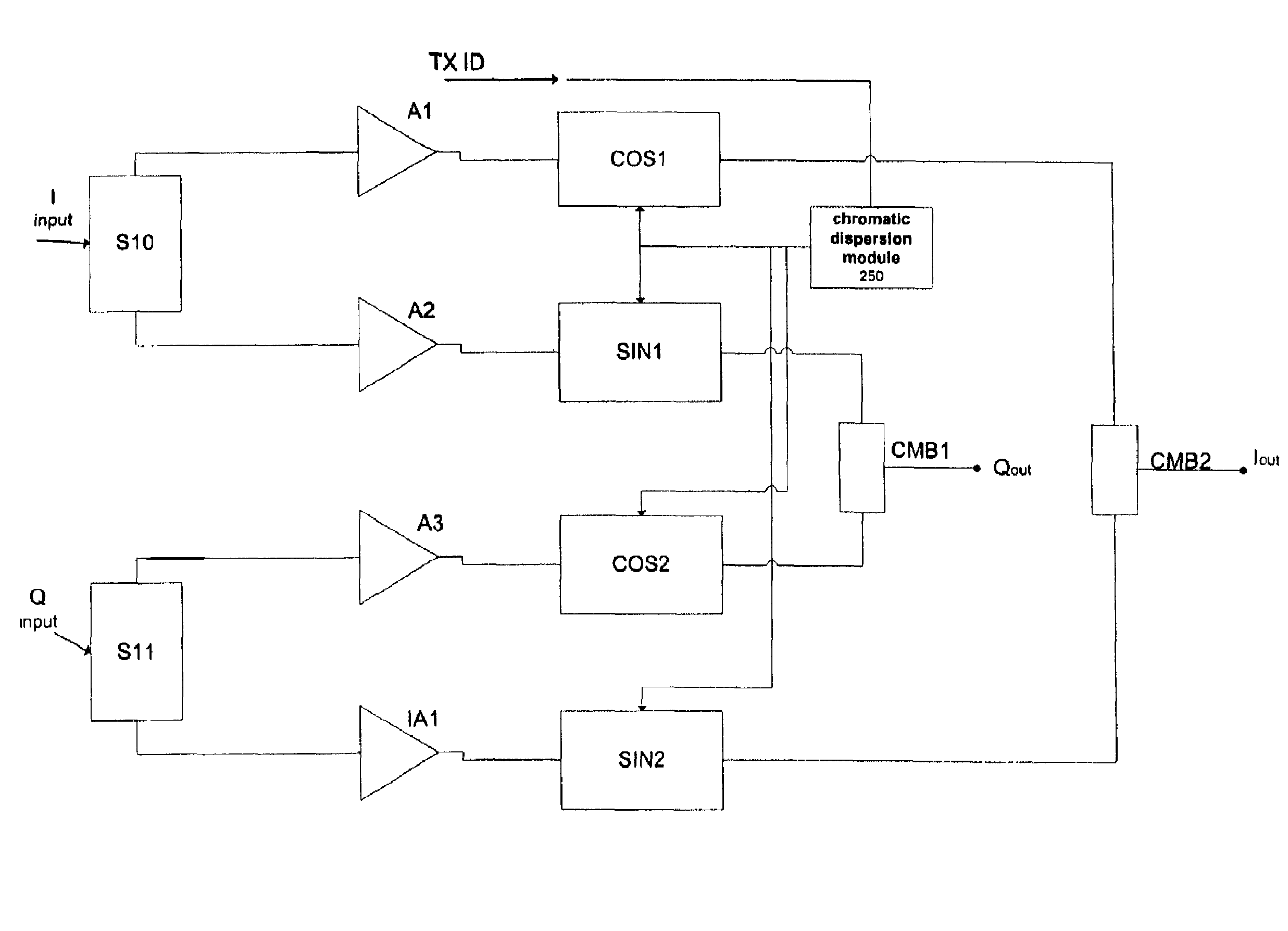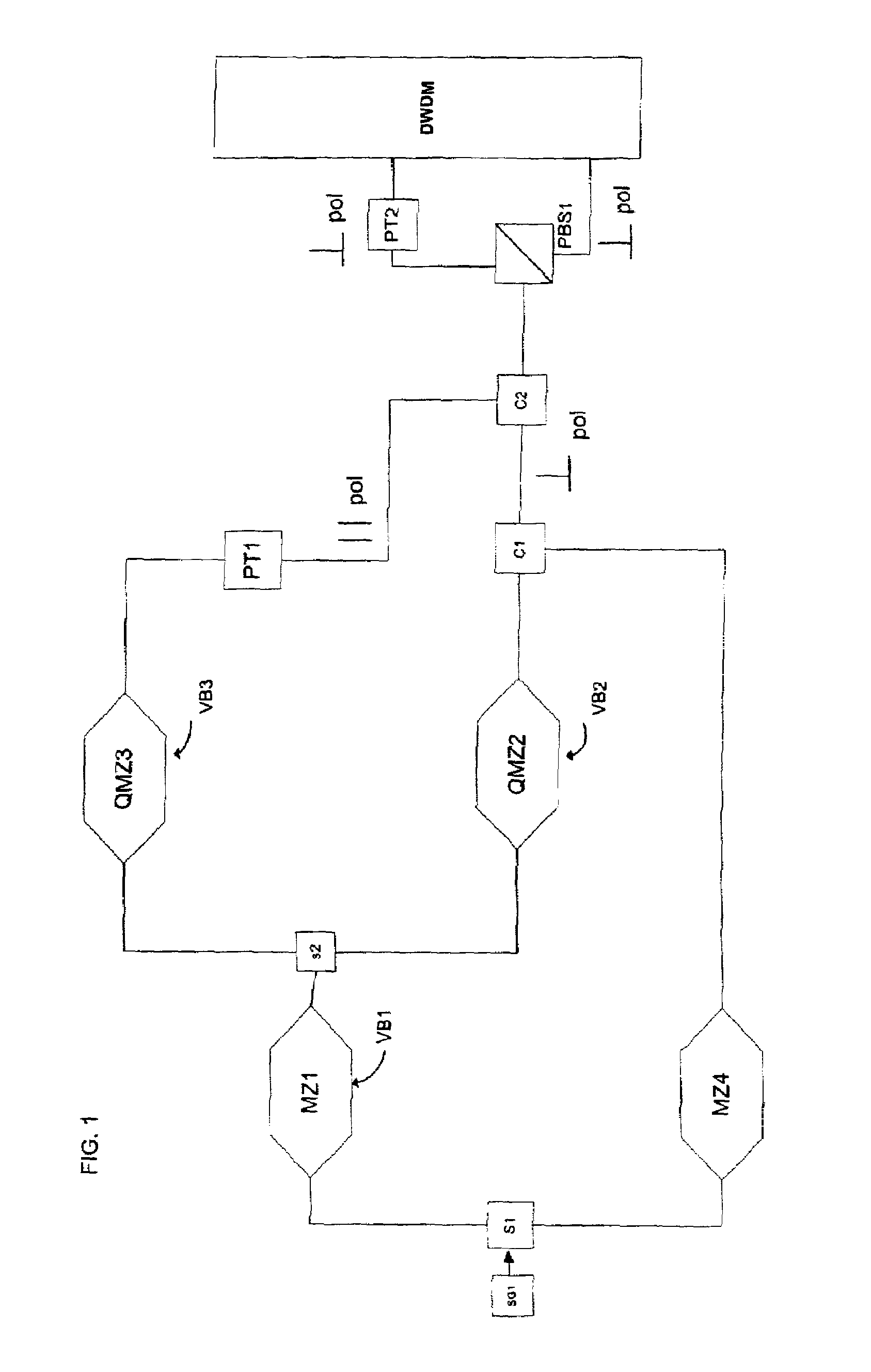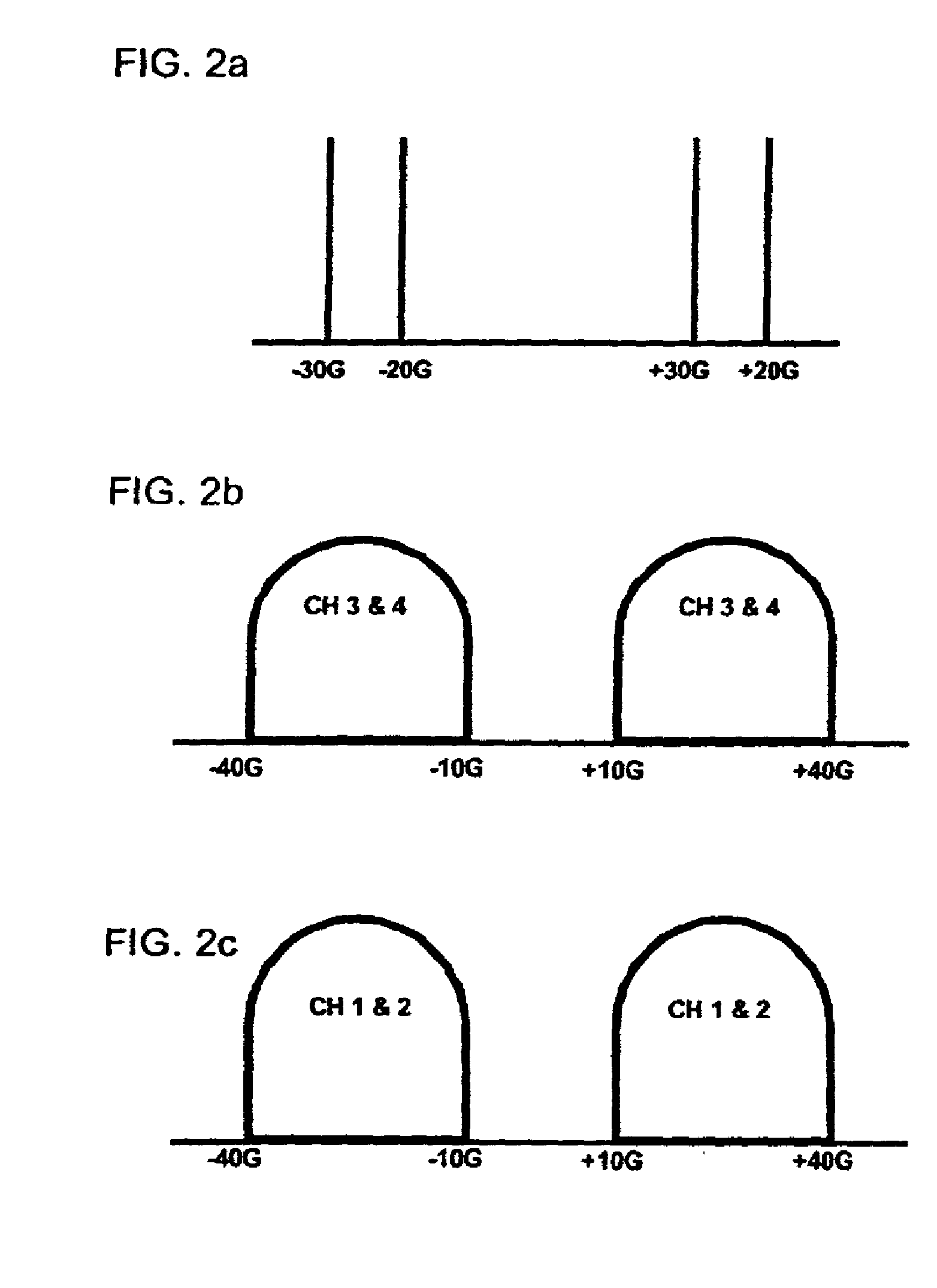Method and system for a polarization mode dispersion tolerant optical homodyne detection system with optimized transmission modulation
a technology of optical homodyne detection and transmission modulation, applied in the field of optical data communication, can solve the problems of adding a further level of complexity and constraints to the design of optical systems, requiring significant signal processing and differential delays, and data transmission at 40 gb/s (or higher)
- Summary
- Abstract
- Description
- Claims
- Application Information
AI Technical Summary
Benefits of technology
Problems solved by technology
Method used
Image
Examples
first embodiment
[0047]FIG. 5 illustrates an embodiment of a homodyne receiver according to the present invention. An optical data signal is received first by a side carrier boosting module 200 for which the present invention provides two exemplary embodiments. In the side carrier boosting module, shown in FIG. 6, the optical data signal is first input to an optical amplifier EDFA1, which may be, for example, an erbium-doped fiber amplifier (EDFA). It is noted that all further optical amplifiers used in the implementations described below may be implemented as erbium-doped fiber amplifiers. The optical amplifier EDFA1 amplifies the entire spectrum of the received signal by, for example, approximately 15-18 dB. The amplified signal output from EDFA1 is split at S3 between an upper branch that is coupled to a Fabry-Perot resonator FP1 and a lower branch that is coupled to an attenuator ATT1.
[0048]The Fabry Perot resonator FP1 functions as a high-Q filter that nearly completely filters out all frequenc...
second embodiment
[0049]the side carrier boosting module, which advantageously makes use of the amplitude-enhancing effect of Stimulated Brillouin Scattering (SBS), is shown in FIG. 7. The SBS effect causes a first optical signal having narrow frequency band around frequency X to be amplified when collides with a signal of frequency X+≈11 GHz traveling in the opposite direction. Referring to FIG. 7, the received signal is input to optical amplifier EDFA3 which amplifies the entire spectrum of the input signal. The signal output from amplifier EDFA3 is transmitted to optical isolator ISL 1, which permits optical signal to travel only in one direction (the direction indicated by the arrow in the figure) and prevents optical signals being reflected or transmitted back toward the amplifier EDFA3. From the optical isolator ISL 1, the optical data signal is split into two branches at splitter S4.
[0050]A first upper branch from splitter S4 leads to Fabry Perot resonator FP2, which passes the side carrier (a...
PUM
 Login to View More
Login to View More Abstract
Description
Claims
Application Information
 Login to View More
Login to View More - R&D
- Intellectual Property
- Life Sciences
- Materials
- Tech Scout
- Unparalleled Data Quality
- Higher Quality Content
- 60% Fewer Hallucinations
Browse by: Latest US Patents, China's latest patents, Technical Efficacy Thesaurus, Application Domain, Technology Topic, Popular Technical Reports.
© 2025 PatSnap. All rights reserved.Legal|Privacy policy|Modern Slavery Act Transparency Statement|Sitemap|About US| Contact US: help@patsnap.com



